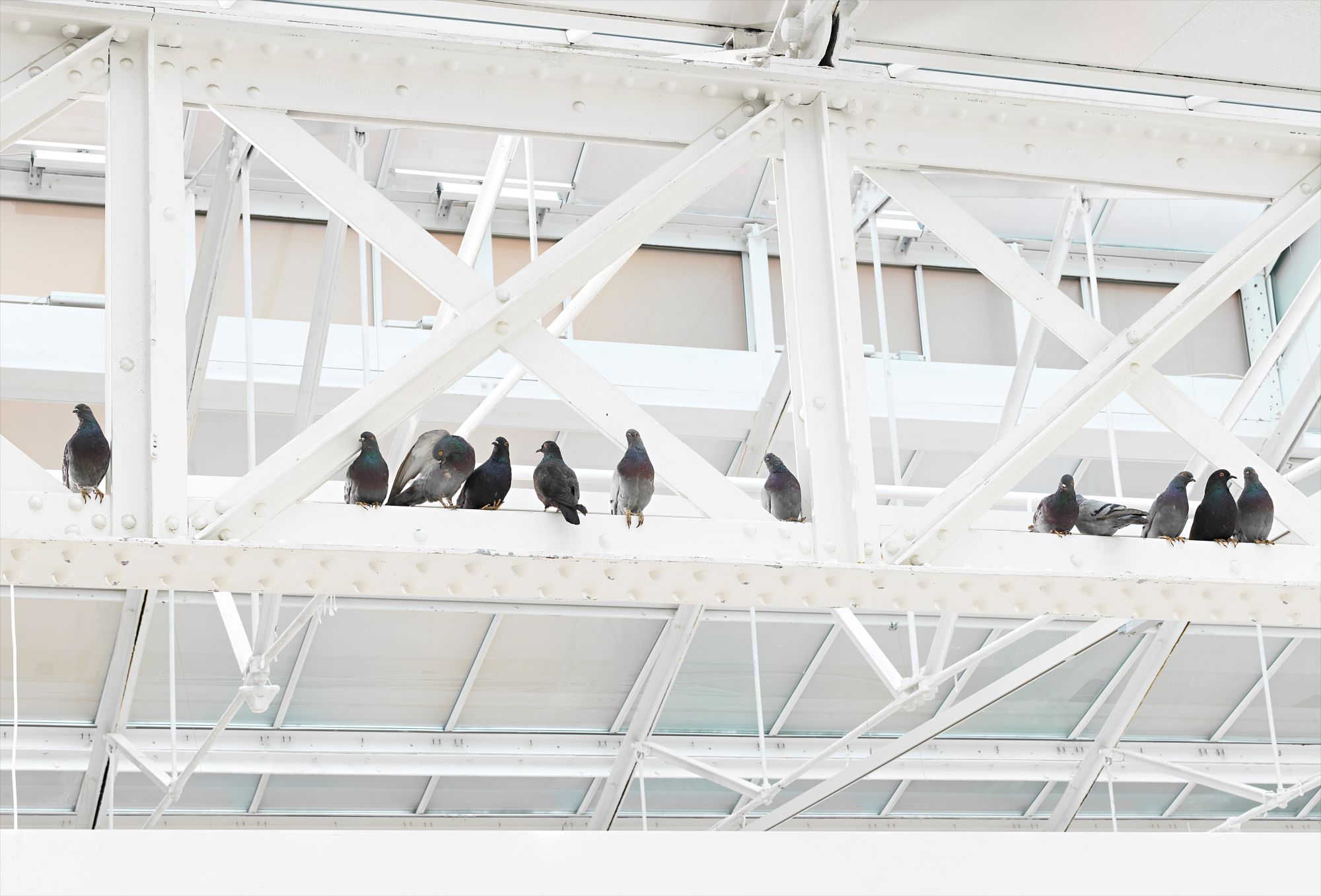

15
Maurizio Cattelan
Turisti
taxidermied pigeons (in 12 parts, life-size)
largest 28 x 24 x 9 cm. (11 x 9 1/2 x 3 1/2 in.)
This work is accompanied by a certificate of authenticity signed by the artist.
Full-Cataloguing
“I’m only trying to find a degree of freedom…I just think that you can create new margins for freedom in every context.” - MAURIZIO CATTELAN
“I am not really sure satire is the key to my work. Comedians manipulate and make fun of reality, whereas I actually think that reality is more provocative than my art. You should walk on the street and see real beggars not my fake ones. You should witness a real skinhead rally.I just take it; I’m always borrowing pieces – crumbs really – of everyday reality. If you think my work is very provocative, it means that reality is extremely provocative, and we just don’t react to it. Maybe we no longer pay attention to the way we live in the world. We are increasingly … how do you say, ‘don’t feel any pain’… we are anaesthetized.” (the artist, in conversation with Nancy Spector, in F. Bonami, n. Spector and B. Vanderlinden, eds., Maurizio Cattelan, London: Phaidon, 2003, p. 17)
Humorous yet provoking, Turisti was executed in 1997 by the Italian artist Maurizio Cattelan, whose works have continuously challenged the nature of the contemporary art world since the late 1980s. Notorious for his controversial sculptures such as one depicting Pope John Paul II felled by a large meteorite or another one where a young Hitler is kneeling in prayer, Cattelan’s oeuvre is a satirical commentary on the contradictions and absurdities of not only the art world, but of Western civilization in general.
The present lot was first exhibited in the Italian pavilion of the 1997 Venice Biennale, curated by Germano Celant, which adopted as its theme, the mixing of generations in Post-War Italian art. Cattelan explained that on his earliest visit to the pavilion one month prior to the opening of the exhibition, he had found the inside in shambles and crammed with pigeons. When confronted with the large, vacant space to fill, Cattelan responded by leaving it exactly how it was when he first saw it. 200 taxidermied pigeons were installed perched on rafters and the edges of dividing walls throughout the pavilion with fictitious excrements positioned on the floor, leading the visitors to look above and notice the pigeons. Cattelan stays true to the Biennale’s theme by producing a work that compliments – or some might say ridicules – the Arte Povera movement, an important Italian post-war artistic movement in which artists realized their works by using unconventional or “poor” materials with a common interest of merging art with life.
The title itself Turisti (Tourists) is an ironic reference to the exhibition’s visitors, who, like the pigeons, curiously observe the room of the pavilion. Turisti is part of a series of works where Cattelan questions the entire concept of the exhibition space and the exhibition itself. For his first appearance at the Venice Biennale in 1993 Cattelan leased his space to a perfume company who installed a billboard across the wall and sarcastically titled it Lavorare è un brutto mestiere (Working Is a Tiring Job). Further exhibiting the oeuvre of the artist is his Untitled work created in 2001, which features a life-size model of the artist peeking through a hole in the floor of the gallery space, directly interacting with the surrounding art in a completely innovative way.
Cattelan’s unorthodox approach to art , which is complemented by his post-Duchampian humour, has led critics to refer to him as an heir to the Italian ‘anti-artist’, Piero Manzoni. His oeuvre draws strong references to the Arte Povera movement, as well as a wide range of post-war art and culture. In Novecento 1997, a taxidermied horse was hung from the ceiling of a Venetian palazzo, discerning an indirect link with Jannis Kounellis’ Senza Titolo (12 Horses), where the Arte Povera artist tethered a stable of twelve horses to the gallery walls throughout the duration of the whole show. Moreover, in his 1986 Untitled, Cattelan showed his provocative humour as he slashed a canvas three times similarly to Lucio Fontana, creating the “z” of zorro, a concept he often adopted for the following years within his works.
The present lot touches on the theme of time, presenting the birds as an invariable presence in the Venice Biennale, which, to Cattelan, are tiresomely familiar: “Time doesn’t affect this place; basically all the Biennales look the same. I installed the birds and the birdshit to prove that everything stands still in that place, that time goes by so slowly” (Interview with Nancy Spector F. Bonami, N. Spector, B. Vanderlinden, Maurizio Cattelan, London, 2000, pp. 18-22). To emphasize this idea even more, Cattelan subsequently decided to repeat and expand this artwork for the 2011 Venice Biennale to include as many as 2000 pigeons, renaming it The Others.